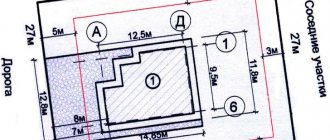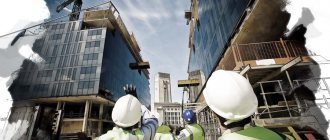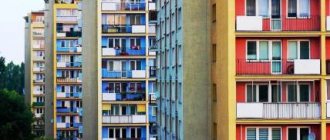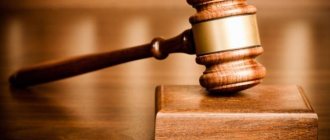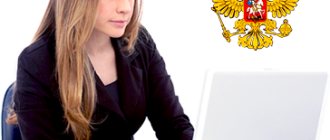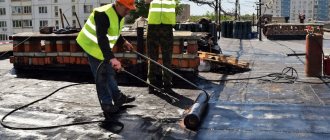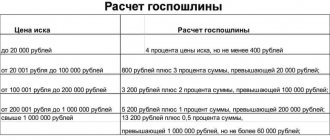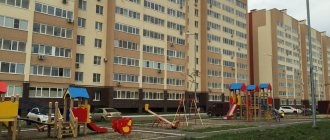The GZHN body refuses to make changes to the register of licenses at the request of the management organization for various reasons, which are then often disputed in court. We are talking about a case that reached the Supreme Court of the Russian Federation, in which the question was considered whether the State Housing Inspectorate was right in considering a two-apartment building to be residential and not multi-apartment.
Why did the RF Armed Forces invalidate some requirements No. 938/pr
1749111
The house has two or more apartments with separate exits
Case No. A70-15067/2019 reached the Supreme Court of the Russian Federation, and the main issue that was considered in all instances was determining the status of the house - whether it was multi-apartment or individual residential.
It started with the fact that in Tyumen the administration held an open competition to select a management organization for a building in which there are only two apartments. The management company that won the competition submitted an application and a package of documents to the GZHN body to include the house in the register of regional licenses: copies of the selection protocol and the management agreement with the owners.
Based on the results of consideration of the application, the State Housing Inspectorate refused the company to make changes to the register, citing paragraphs. “a” clause 5 of order No. 938/pr: The MA did not indicate the address of the apartment building in the application, did not attach a copy of the competitive selection protocol and the management agreement. GZHI noted that all the data in the documents does not relate to apartment buildings, but to a residential building, since the apartments, according to the technical documentation, do not have access to common areas, but have separate entrances. The building cannot be classified as an apartment building.
The managing organization did not agree with this position of the GZHI and filed a lawsuit demanding that the department’s refusal be declared illegal and oblige the GZHI to make changes to the register of licenses.
What do the documents say?
False theorists love to operate in legal terms. When talking about the owner of an apartment building, supporters of the false theory in question often use accounting terms, declaring that “the apartment building is on the balance sheet of the municipality.”
Let's see if MKD can be an object of accounting.
By order of Rosstandart dated December 12, 2014 No. 2018-st, “OK 013-2014 (SNS 2008) was adopted and put into effect. All-Russian Classifier of Fixed Assets" (hereinafter - OKOF). According to the Introduction of the OKOF, “OKOF is used for the purposes of budgetary (accounting) accounting by public sector organizations in cases provided for by federal standards, unless otherwise established by the authorized bodies of state regulation of accounting. The objects of classification in OKOF are fixed assets.”
OKOF assigns code 100.00.00.00 to the group “Residential buildings and premises”. It is important to note that in this grouping there is no such type of object as “apartment buildings”. That is, in principle, there is no such object of law as an “apartment building”; an apartment building cannot be on anyone’s balance sheet, cannot be an object of accounting.
An apartment building exists as a technical object. However, such an object of law as an “apartment building” does not exist.
But what about the extracts from the Unified State Register of Real Estate, where it is written in black and white that the owner of the apartment building is supposedly the municipality?
Let's consider one of these extracts presented by false theorists (shown in the figure). If you look at the information about the copyright holder in Section 2, then such information actually contains an indication that the municipal entity has the right of ownership (circled in red in the figure). But if you look at the list of real estate objects to which the municipality has the right (circled in blue in the figure), you can see that individual premises of the house are listed as such objects. Moreover, if you look closely at the numbers of these premises, you can see that these are not all premises - some of the numbers are missing, since the premises with the missing numbers are owned not by the municipality, but by other owners.
Thus, the presented Extract contains information about ownership only of individual premises in the apartment building, and not of the entire apartment building as a whole. Information on the ownership of any apartment building in the Unified State Register cannot be contained, and, consequently, no Extracts from the Unified State Register allegedly confirming the ownership of any public entity (or anyone at all) to the apartment building as a whole, simply does not exist. Because there is simply no such object of law as MKD.
And even if all the premises in the apartment building have one owner, this owner will own precisely these premises, and the Extract from the Unified State Register in this case will contain information about all the premises in the house. As the owner of all premises in the house, such a person will solely own the common property in the apartment building. But in no case will such a person be considered the owner of the apartment building as a whole.
The apartments have exits to common areas or to the common plot of land where the house is located
The decisive factor in the case was the decision of the court of first instance, which was upheld in the courts of appeal and cassation, and was also confirmed by the Supreme Court of the Russian Federation. It was based on the following legislation:
- A residential building is an individually defined building consisting of rooms, as well as premises for auxiliary use (Part 2 of Article 16 of the Housing Code of the Russian Federation).
- An apartment building is a collection of two or more apartments that have independent exits either to a land plot adjacent to a residential building or to common areas (clause 6 of the Decree of the Government of the Russian Federation dated January 28, 2006 No. 47). Also, the MKD must contain elements of the common property of apartment owners.
- Elements of public property in an apartment building include, among other things, the land plot on which it is located (clause 4, part 1, article 36 of the Housing Code of the Russian Federation).
The court took into account that the disputed object is located on a land plot with a single cadastral number. The site is intended for an apartment building. The inspection report of the building indicates the presence of two apartments. Consequently, this is an apartment building, and not an individual residential building, and the administration had the legal right to hold an open competition, and the management company had the legal right to participate in it and conclude a management agreement with the owners. The judge granted the company's claim.
Does GZHI need a copy of the signed DU to change the register of licenses?
55772
(Slide 2) The emergence of the right to common property in MKD
The issue of common property, starting from 1995, was resolved in the Civil Code of the Russian Federation (Civil Code of the Russian Federation). Articles 289, 290 of the Civil Code of the Russian Federation indicated that the owner of an apartment in an apartment building, along with the premises occupied by him as an apartment, also owns a share in the ownership of the common property of the house.
The owners of premises in a residential building became owners of the common property of the house simultaneously with the acquisition of the status of owner, which arose from the moment of registration of ownership rights as a result of the privatization of an apartment or another transaction for its acquisition (for example, as a result of participation in shared construction, purchase, gift, etc. .).
The Civil Code established an important principle for the emergence of rights to common property: these rights are not subject to separate registration, but follow the fate of the fundamental right - the right to residential/non-residential premises in the house.
Characteristic features of common shared ownership of real estate:
- inability to allocate shares in kind;
- the impossibility of alienating a share in the right of common ownership separately from residential/non-residential premises;
- a share cannot exist independently; it is an integral part of residential/non-residential premises as an object of ownership, and therefore always follows the fate of such premises.
(Slide 3) Composition of common property in MKD
The common property in an apartment building includes:
- landings, stairs, elevators are classified as common property, since they are intended for the passage (or passage) of all owners to their apartments;
- The place where the elevator is located is called the elevator shaft. In addition to this, the house may have a ventilation shaft - it is also considered common property;
- technical floor (needed for placing engineering equipment and laying communications); it can be located in the lower (technical underground), upper (technical attic) or in the middle part of the building;
- Some apartment buildings have premises designed to meet the social and living needs of residents. These are wheelchairs, recreation rooms, gyms, dance classes - of course, if all residents can use them. If someone bought two apartments in your building on the ground floor and converted them into a paid gym, these premises are not common property - they have their own owner;
- the roof is also considered community property. In housing terminology, it is defined as “the upper enclosing structure of a building that performs load-bearing, waterproofing and thermal insulation functions”;
- enclosing load-bearing and non-load-bearing structures of the house. First of all, these include walls. In addition, in accordance with this principle, the balcony slab is included in the common property. It should be understood that as part of the balcony, it is the slab that belongs to the common property. The owner carries out the maintenance of the parapet, the glazed part of the balcony and the canopy independently, since this is his personal property;
- the technical basement also belongs to the common property of all owners of premises in an apartment building, since it serves for ventilation of the underground space under the premises of the first floor, as well as for the placement of engineering equipment and utility networks of the house;
- a land plot is an area intended for the operation and maintenance of an apartment building. On the land plot there is a house, improvement elements and other objects intended for the maintenance, operation and improvement of this house;
Landscaping elements include, for example, areas for drying clothes, cleaning clothes, carpets and household items; recreation areas for adults; children's playgrounds and sports grounds with landscaping and necessary equipment for children's summer and winter recreation.
This composition is defined in more detail in the Decree of the Government of the Russian Federation dated August 13, 2006 No. 491 “On approval of the Rules for the maintenance of common property in an apartment building and the rules for changing the amount of fees for the maintenance and repair of residential premises in the case of the provision of services and performance of work on the management, maintenance and repair of common property in an apartment building of inadequate quality and (or) with interruptions exceeding the established duration" (hereinafter referred to as Rules No. 491).
When determining the composition of common property, information on rights to real estate objects that are common property contained in the Unified State Register of Rights to Real Estate and Transactions with It (hereinafter referred to as the Register), as well as information contained in the state land cadastre, is used.
In the event of a discrepancy (contradiction) in information about the composition of common property contained in the Register, documentation of state technical accounting, accounting of managers or other organizations, technical documentation for apartment buildings, the information contained in the Register takes precedence.
(Slide 4) Rules for maintaining common property in apartment buildings
!!! In accordance with clause 10 of Rules No. 491, common property must be maintained in accordance with the requirements of the legislation of the Russian Federation (including on the sanitary and epidemiological welfare of the population, technical regulation, consumer protection) in a condition that ensures:
- compliance with the reliability and safety characteristics of an apartment building;
- safety for the life and health of citizens, safety of property of individuals or legal entities, state, municipal and other property;
- availability of use of residential and (or) non-residential premises, common areas, as well as the land plot on which the apartment building is located;
- compliance with the rights and legitimate interests of premises owners, as well as other persons;
- constant readiness of utilities, metering devices and other equipment included in the common property for the provision of utilities (supply of utility resources) to citizens living in an apartment building, in accordance with the Rules for the provision of utility services to citizens;
- maintaining the architectural appearance of an apartment building in accordance with the design documentation for the construction or reconstruction of an apartment building;
- compliance with the requirements of the legislation of the Russian Federation on energy saving and increasing energy efficiency.
The maintenance of common property, depending on the composition, design features, degree of physical wear and tear and technical condition of the common property, as well as depending on the geodetic and climatic conditions of the location of the apartment building, includes:
- inspection of common property carried out by the owners of premises, ensuring timely identification of non-compliance of the condition of common property with the requirements of the legislation of the Russian Federation, as well as threats to the safety of life and health of citizens;
- ensuring the readiness of in-house engineering power supply systems and electrical equipment that are part of the common property to provide public electricity supply services;
- maintaining the premises that are part of the common property in a condition that ensures the temperature and humidity in such premises established by the legislation of the Russian Federation;
- cleaning and sanitary cleaning of common areas, as well as the land plot included in the common property;
- collection and removal of solid and liquid household waste, including waste generated as a result of the activities of organizations and individual entrepreneurs using non-residential (built-in and attached) premises in the apartment building;
- maintenance and care of landscaping and landscaping elements, as well as other objects intended for the maintenance, operation and improvement of this apartment building located on a land plot that is part of the common property;
- current and major repairs, preparation for seasonal operation and maintenance of common property,
- carrying out mandatory energy saving and energy efficiency measures in relation to common property, included in the list of measures approved in accordance with the procedure established by the legislation of the Russian Federation;
- ensuring the installation and commissioning of collective (common house) metering devices for cold and hot water, thermal and electrical energy, natural gas, as well as their proper operation (inspections, maintenance, verification of metering devices, etc.).
The minimum list of services and work necessary to ensure the proper maintenance of common property in an apartment building, and the Rules for the provision of services and performance of work necessary to ensure the proper maintenance of common property in an apartment building, are established by the Government of the Russian Federation in Decree dated April 3, 2013 No. 290 and includes into yourself:
- work necessary for the proper maintenance of load-bearing structures (foundations, walls, columns and pillars, floors and coverings, beams, crossbars, stairs, load-bearing elements of roofs) and non-load-bearing structures (partitions, interior decoration, floors) of apartment buildings;
- work necessary for the proper maintenance of equipment and engineering support systems that are part of the common property in an apartment building;
- works and services for the maintenance of other common property in an apartment building (dry and wet cleaning of common property, disinfection, deratization of premises).
!!! In accordance with clause 15 of Rules No. 491, the scope of work does not include:
- maintenance and repair of doors to apartments, doors and windows located inside residential or non-residential premises that are not common areas;
- insulation of window and balcony openings, replacement of broken glass windows and balcony doors, insulation of entrance doors in apartments and non-residential premises that are not common areas;
- cleaning and cleaning of land plots that are not part of the common property, as well as landscaping and care of landscaping elements (including lawns, flower beds, trees and shrubs) located on land plots that are not part of the common property. These actions are carried out by the owners of the relevant land plots.
(Slide 5) Expenses of premises owners in apartment buildings
The Housing Code states that the owner of premises in an apartment building is obliged to bear the costs of maintaining housing, as well as to participate in the costs of maintaining common property in the house in proportion to his share in the right of common ownership of this property by paying fees for the maintenance of residential premises and contributions for major repairs.
Expenses for the maintenance and repair of residential/non-residential premises are determined in an amount that ensures the maintenance of common property in accordance with the requirements of the legislation of the Russian Federation. They include:
- expenses for the maintenance and repair of in-house engineering systems of electricity, heat, gas and water supply, drainage,
- reasonable expenses for collection of debts for payment of residential premises and utilities,
- expenses for taking meter readings,
- costs of maintaining information systems that ensure the collection, processing and storage of data on payments for residential premises and utilities, issuing payment documents for payment of residential premises and utilities.
If the owners at their general meeting did not decide to establish the amount of payment for the maintenance of residential premises, such amount is established by the local government body.
More detailed information on how owners must pay for services for the maintenance and repair of common property in an apartment building, depending on the form of management of the house, is prescribed in Rules No. 491.
For example, when determining the amount of payment for the maintenance and repair of residential premises of the owners of premises who have chosen a management organization, the decision of the general meeting of owners of premises in such a house is made for a period of at least one year, taking into account the proposals of the management organization. The specified fee amount is set the same for all owners of premises.
Expenses for major repairs of common property in apartment buildings are financed from the capital repair fund and other sources not prohibited by law. In the Stavropol Territory, the minimum contribution for major repairs is set at 6.36 rubles. per square meter. It may be higher if such a decision was made at a general meeting of the owners of the house.
The obligation to pay the costs of major repairs of an apartment building applies to all owners of premises in this house from the moment the ownership of the premises in this house arises. When ownership of premises in an apartment building is transferred to the new owner, the previous owner’s obligation to pay the costs of major repairs, including his existing debt, also passes.
Thank you for your attention!
In the next lesson we will look at the topic
“Quality control of public services
Apartment owners have common property
GZHI filed an appeal, pointing out that the land plot, although it belongs to the common property of the apartment building, is not a common premises. Therefore, the presence of such a plot cannot be a sign that the house is an apartment building. A residential building consisting of two apartments with separate exits to a land plot without direct access to common areas is not multi-apartment. The disputed house has the characteristics of a residential building of a blocked development in accordance with Art. 49 Civil Code of the Russian Federation.
The Court of Appeal, repeating the arguments of its colleagues and fully agreeing with them, also added that
- The disputed building is recognized as an apartment building due to the presence of common property in it: a single roof and a single solid facade, a common foundation, one plot of land, and intra-building utilities for energy supply.
- The presence of common property entails the possibility of managing it by a specialized organization.
- The technical passport of the house indicates the presence of attic floors; accordingly, the house has an attic, which is a room intended to serve more than one apartment, and is part of the common property of the owners of the premises.
The Court of Appeal confirmed the legality of recognizing the building as an apartment building and, therefore, the illegality of the refusal of the State Housing Authority to make changes to the register of licenses according to the application of the management organization. The dispute moved to the cassation court, which completely agreed with the previous decisions. The Supreme Court of the Russian Federation, to which the State Housing Inspectorate appealed, refused to consider the complaint, having found no grounds for this.
As a result, the house was recognized as an apartment building, and the State Housing Authority was obliged to make changes to the register of licenses of the region in accordance with the results of an open competition for the selection of management entities.
On the extension of the contract with the management company, concluded based on the results of an open competition
77361
Signs and conditions for recognizing a premises as an apartment
From this definition, which may vary depending on the legislative acts of the region, we can draw conclusions about the main features of the apartment as such:
- structural isolation is the separation of apartment premises from other parts of the building by walls and a blocked entrance;
- functional connectivity - premises inside the apartment can be used for living and meeting household needs, while access to them is possible through a single entrance;
- compliance with sanitary and other standards governing composition, area, lighting, air exchange, water supply, energy, communication and wastewater disposal systems, general and fire safety;
- constructive connection with the building - the apartment is part of the house, it physically cannot be separated and moved.
A prerequisite for recognizing a premises as an apartment is the location of the house (building) on lands allocated for residential use and construction. If one of the listed conditions is not met, then the object becomes non-residential. An example of such a solution is apartments, which may have sufficient functionality for temporary residence (accommodation), but are not recognized as residential properties.
On a note
The status of a house as an apartment building is important for the owners and, as in this case, for the municipality and management organization. If the house is multi-apartment, then questions arise about the method of managing it, carrying out current and major repairs of common property, forming a capital repair fund, recognizing the house as unsafe, and others.
As the courts indicated in the case considered, if a residential building with two or more apartments has common property: a roof, an attic, a basement, a plot of land, communications, then such a building is recognized as an apartment building, regardless of whether the apartments are equipped with exits to common premises.
Requirements for MKD
The basic requirements are specified in SNiP 31-01-2003, the regulations apply to:
- building location;
- altitude;
- bearing structures;
- apartments and common areas;
- internal communications;
- activities of organizations located in commercial premises of apartment buildings.
This document does not apply to mobile buildings and blocked buildings . According to Art. 49 of the Town Planning Code, a blocked building is a building of up to 3 floors, which consists of separate blocks, intended for the residence of several families.
Such a building has common walls between blocks without openings and a separate exit from each apartment to a common area.
Features of apartment buildings
MKDs differ from other residential buildings and have their own characteristics . Apartment buildings can be point or extended, depending on their height and length. There may be several entrances with a separate entrance. The height of dotted buildings is higher than their length; they often have one entrance.
MKD is divided into:
- Sectional. The house consists of entrances and sections, each of which has its own staircase. On the floors there is a landing from which people enter the apartments.
- Bellhops. Several staircases lead to a common corridor. The apartments can be accessed through an internal corridor.
- Gallery. Around the house or along one side of the building there is a gallery from where you can enter the apartments. There is usually only one staircase.
The features of an apartment building include objects located inside the building:
- Residential premises. This includes apartments in a residential building or dorm rooms that are owned by citizens or companies.
- Areas of the non-residential sector. Usually located on the first floor or in the zero sector.
- Areas for other purposes. This includes entrances, basements, attics, common corridors, staircases, and elevators.
In an apartment building:
- There are a large number of owners who are responsible for personal property and for the maintenance of common areas.
- Real estate is subject to wear and tear, and a lot of money is spent on maintenance and repairs. Residential and commercial premises do not exist without an owner, so repair and maintenance fees are charged in any case.
- Centralized communications, therefore it is impossible to limit resources to debtors in a single apartment, except for electricity.
- It is imperative to have a management organization that monitors and controls the supply of resources, proper care and technical condition of communications and structures.
- Financing comes not only from the owners’ funds, but also from the city budget.
Local area
Since maintaining a plot of land requires expenses from the owners, it is important to know what is considered the adjacent territory of an apartment building.
This is an adjacent plot of land around a residential building, which is assigned to it by town planning and land management organizations. The parameters, area and boundaries of the local area are indicated in the cadastral passport.
Local areas include:
- emergency and fire passages;
- children's and sports grounds;
- clothes dryers;
- parking lots.
The adjacent land is considered the property of the apartment building; its maintenance and operation is carried out at the expense of all apartment owners . Although owners receive the local area free of charge, it is considered a taxable property. It is often used at their own discretion, erecting a store instead of a park or playground.
